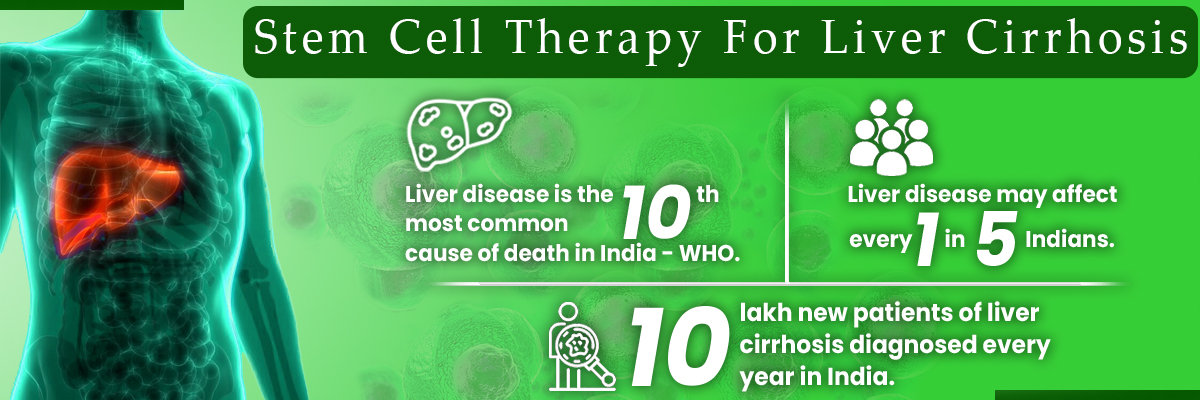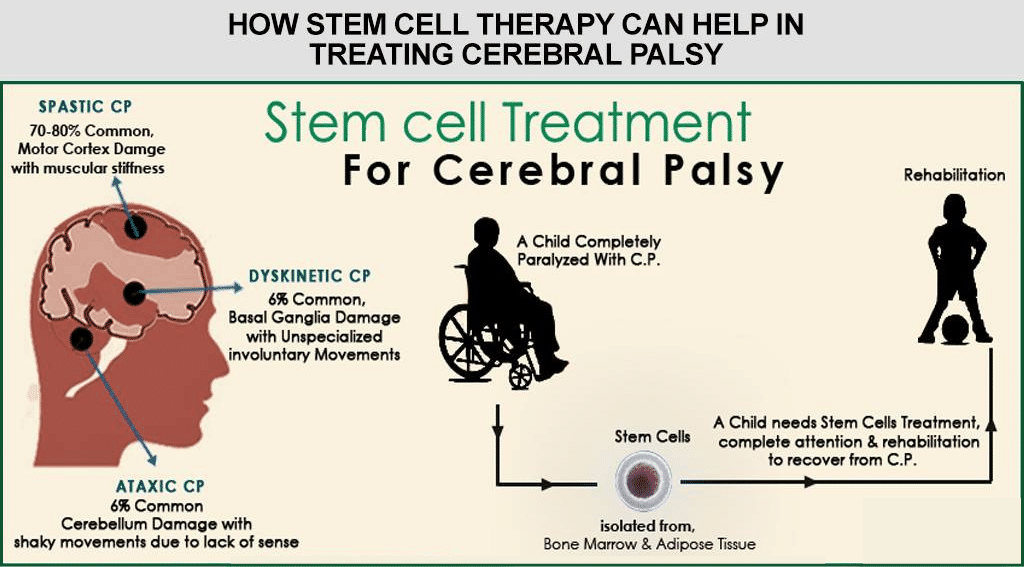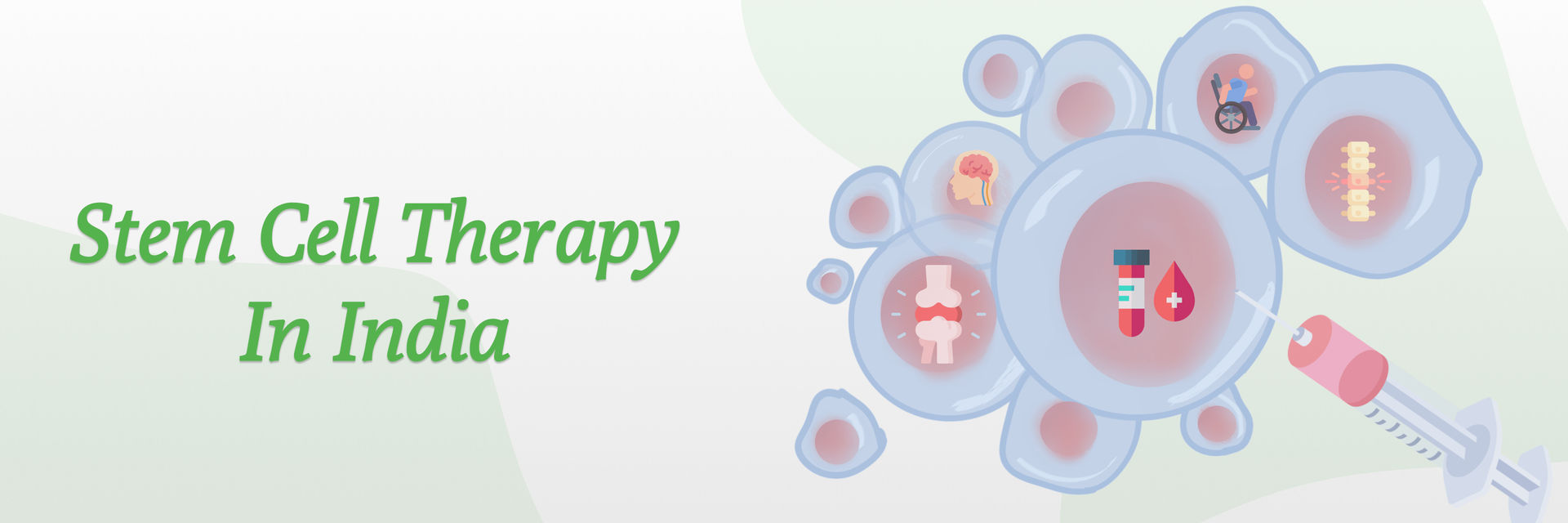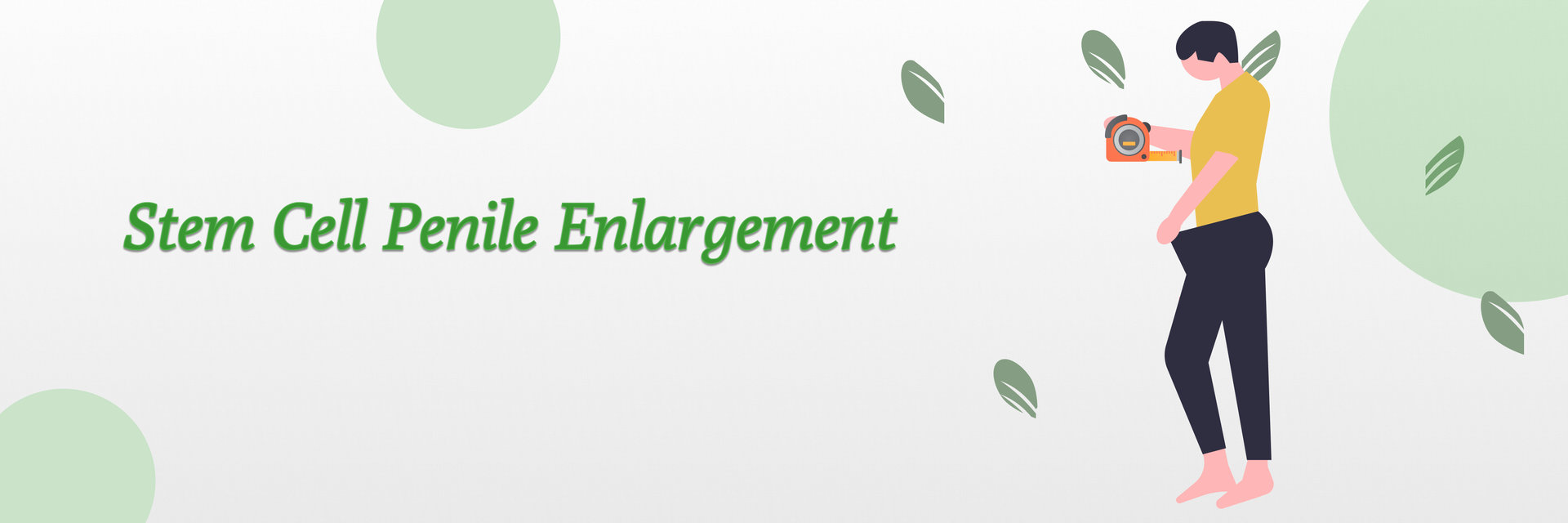Overview
It is an exciting time to be alive in the world of medical breakthroughs. Today, we can live longer and enjoy a better quality of life, free from conditions once considered untreatable. A significant advance in this era is 'Regenerative Medicine,' which uses our body's components to treat degenerative diseases.
At the forefront of this revolution are Platelet-Rich Plasma (PRP) Therapy and Stem Cell Therapy. PRP uses healing components in a patient's blood to expedite recovery, while Stem Cell Therapy regenerates damaged tissues. These therapies mark a milestone in medical advancements.
The regenerative medicine market is projected to reach $39 billion by 2023. Studies show PRP can reduce recovery time by 50%, and stem cell treatments have an over 80% success rate in clinical trials.
Dr. Pradeep Mahajan, a visionary and pioneer in regenerative medicine, has significantly advanced these therapies. His dedication to innovative treatments and his compassionate approach have transformed countless lives, offering hope and healing to those in need.
We have discussed everything you need to know about Stem Cell Therapy and PRP below.
First, let’s discuss,
Stem Cell Therapy

Stem cells can differentiate into any tissue of the body.
They have three main properties that benefit the healing process:
Stem cells are usually retrieved from the patient. In a few cases where this is not possible, donor stem cells may be used.
Stem cells can now be derived from multiple areas of the body. The most used stem cells are extracted from the bone marrow and adipose-rich tissue. In a few rare conditions, fetal stem cells are also used.
Nurture Your Wellness with Stem Cell Therapy. Your well-being is our priority. Call us now to book your appointment and embark on a transformative journey toward a healthier you.
Are you wondering which Conditions Can be Treated with Stem Cell Therapy?
Well, stem cell therapy can be used to treat several conditions. The main purpose of this treatment is to replace damaged tissue. Some of the known conditions are:
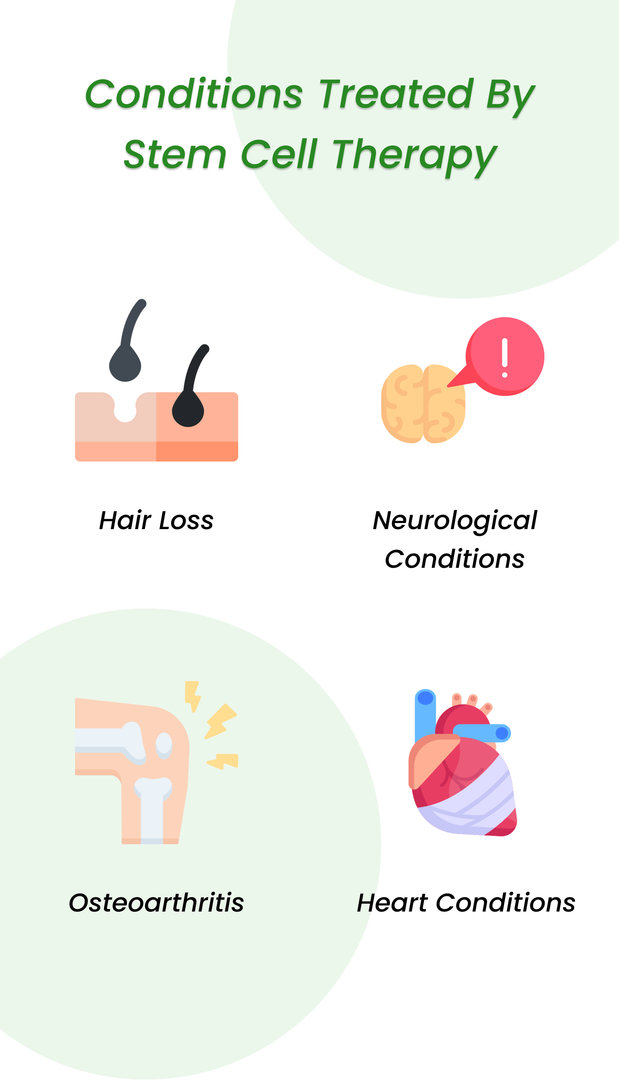
- Osteoarthritis
- Meniscus Injury
- Neurological conditions like epilepsy and strokes
- Heart conditions like myocardial infarction
- Autoimmune disorders
Have you been diagnosed with any of the above conditions?
Then Stem Cell Therapy is the best answer!
Stem Cell Therapy Process
Stem cell therapy is a comparatively simple procedure to perform and is divided into the following steps:
- The first step is to extract the stem cells. The most common sites for this procedure are the hip bone or abdominal fatty tissue. Local anesthesia may be required to keep the patient comfortable.
- In the next phase, the extracted bone marrow or adipose tissue is transported to the stem cell laboratory to purify the stem cells. This is done by a process called the density gradient technique.
- The most common method for delivery of these stem cells is by intravenous infusion. To treat hair loss, they are injected directly into the scalp.
Like most people, are you also afraid of treatments just because of their side effects?
Then you would be glad to know that stem cell therapy is a safe procedure with minimal or no side effects.
Yes, you read that right!
Clinical trials for stem cell research for various conditions have been underway for over a decade. So far, no long-term side effects have been recorded.
It is a non-invasive procedure, and the recovery period of this procedure is quite short. It is noteworthy to know that stem cell therapy is yet to be approved by the FDA. However, all clinical trials are well-documented.
When it comes to any treatment, one common question asked by those planning to undergo the treatment is “ What is the cost of the treatment?
So, if you are planning to undergo stem cell therapy, you surely might be eager to learn about its cost, right?
So, let’s know,
Cost of Stem Cell Therapy
The cost of stem cell therapy ranges from 4.5 lakhs to 12 lakhs INR. Each cycle costs around 1.5 lakh INR. The number of cycles required will depend on the severity of the condition being treated.
Now, let’s talk about another effective treatment known as platelet-rich plasma or PRP.
PRP Injections
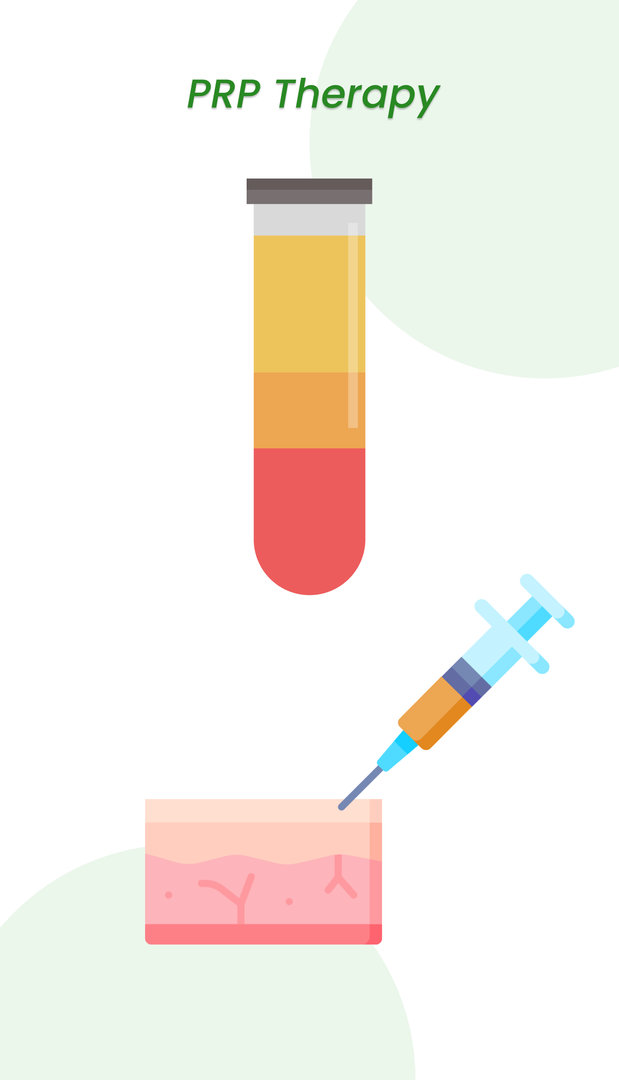
Platelet-rich plasma is made up of two components: plasma and platelets. Plasma is the liquid part of the blood that houses all the blood cells. One lesser-known fact about platelets is that it is rich in growth factors.
These growth factors are capable of activating cell reproduction. This helps stimulate tissue regeneration or healing in the treated area. PRP is blood that contains a higher concentration of plasma.
Benefits of Combining PRP and Stem Cell Therapy
1. Enhanced Healing: When used together, PRP (Platelet-Rich Plasma) can accelerate the effects of stem cells by providing growth factors that stimulate tissue repair. This combination boosts the body’s healing ability in conditions like joint injuries and hair loss.
2. Improved Cell Regeneration: Stem cells promote the regeneration of new cells, while PRP enhances the environment for these cells to thrive, improving overall outcomes for patients.
3. Faster Recovery: Combining both treatments can result in quicker recovery times, especially for conditions like arthritis, hair thinning, and soft tissue damage.
4. Reduced Inflammation: PRP reduces inflammation in affected areas, helping stem cells work more efficiently to repair and regenerate tissue.
5. Comprehensive Treatment: By using both therapies, patients may experience better and longer-lasting results than using PRP or stem cells alone. This comprehensive approach makes the treatment suitable for more severe or chronic conditions, such as extensive hair loss or degenerative joint diseases.
What conditions can PRP Injections Treat?
PRP Injections have shown promising results in treating several conditions. Some of these include:

- Hair loss: PRP can be directly injected into the scalp to promote hair growth and prevent hair loss. Several studies have shown that PRP has been effective in treating male-pattern baldness. It is also advised after hair transplants to improve hair growth.
- Tendon, Ligament, Muscle, and Joint Injuries: These injuries usually take a notoriously long time to heal. Adding PRP shots to your treatment regimen could accelerate this healing process. It could also aid in reducing pain and a faster return to normal activities.
- Osteoarthritis: A small study found that PRP injections showed better results than hyaluronic acid injections, which are traditionally administered in such cases. Research shows that PRP injections reduce joint stiffness and inflammation.
- Post-Surgical Healing: PRP injections are often given to decrease the recovery period after muscle or tendon surgeries.
- Acute Injuries: Doctors have successfully used PRP injections in acute sports injuries like a pulled hamstring or a knee sprain.
- Skin Rejuvenation: PRP injections have sporadically been used as an anti-aging treatment. However, there are no studies that prove its effectiveness.
Have you been diagnosed with any of the above conditions?
Then PRP is one of the most effective solutions to go for!
However, it is important to note that the results of PRP injections are not visible immediately. They usually appear several weeks after the injections. Also, PRP is not advised for those suffering from AIDS, Hepatitis C, HIV, etc.
PRP Injection Process
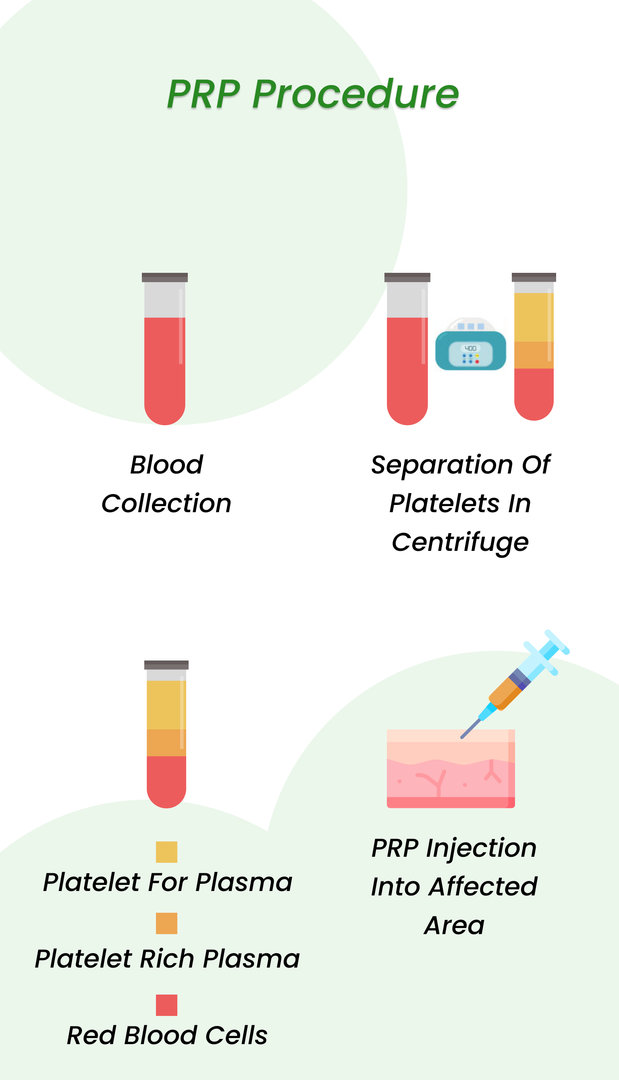
PRP is collected from the patient’s blood. It is a fairly simple process that doesn’t take much time.
- Depending on the amount of PRP required, one to a few tubes of blood are collected from the patient.
- This blood is then run through a centrifuge to separate the platelets from other blood components. This process takes about fifteen minutes.
- This separated plasma is then prepared for injection.
- The PRP is injected directly into the affected site. Imaging systems like ultrasound might be used to guide the injection to the precise spot in case of treating musculoskeletal injuries.
Understanding the PRP Injection Process. Ready to take the first step to recovery? Contact us today to initiate your journey towards revitalized health through PRP therapy.
After reading about the procedure, you surely might have the next question Do PRP Injections Have Any Side Effects?
You would be glad to know that injecting PRP is a pretty safe procedure. Since the blood is sourced from the patients themselves, the risk of allergic reactions or rejection is almost zero. However, a few rare side effects can include:
- Bleeding
- Tissue damage
- Infection
- Nerve injuries
Recovery time after this procedure is much less. Resting the injured area is usually advised. However, this is less because of the procedure and more to avoid aggravating the injury.
Cost of PRP Injections
Are you one of those people who are price-sensitive and always looking for affordable options?
Then there is no reason to say no to PRP treatment!
Depending on the procedure it is used for, PRP injections can cost 3000 to 10,000 INR per session.
Isn’t that quite affordable?
Is PRP and Stem Cell Therapy the Same Thing?
This is a question that most people have!
Are you also one of them?
Then do not hit the back button as your answer is on this page! Just below!
While both these treatments are types of regenerative medicine, and follow similar principles, they are not the same. PRP injections are used to treat less severe conditions. It is also indicated in acute injuries. Stem cell therapy has shown some success in treating even severe conditions.
PRP is made from our blood, whereas stem cells need to be extracted from the bone marrow or adipose tissue. This makes stem cell therapy a little more invasive and expensive.
It is also important to note that the number of stem cells in our bone marrow is limited. In comparison, you can have an unlimited supply of PRP, as it is extracted from our blood.
Difference Between PRP and Stem Cell Therapy
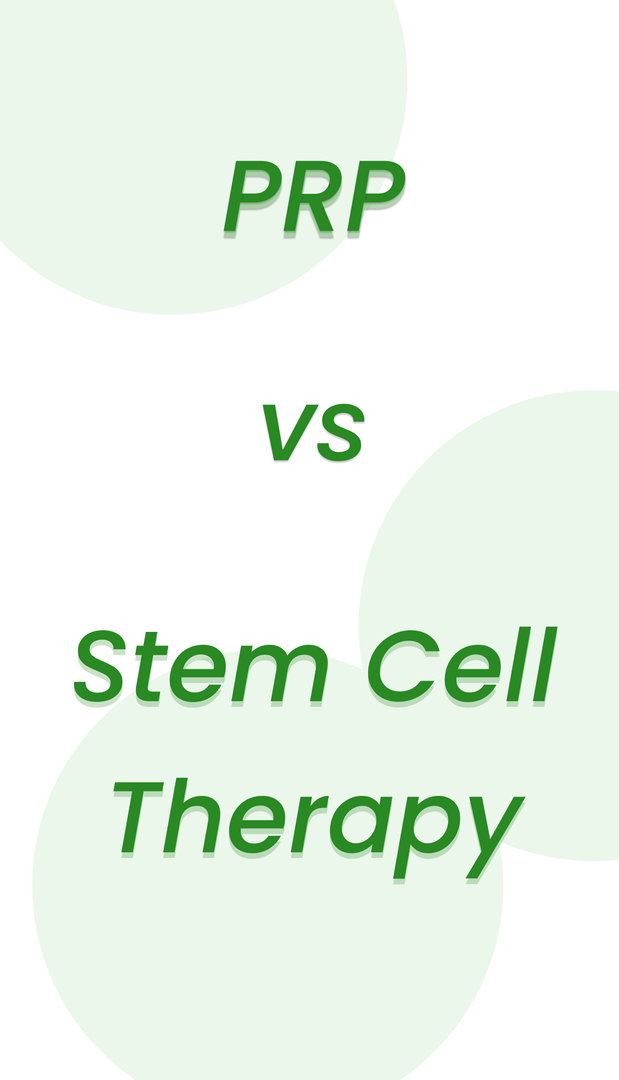
While the concept of both treatments is the same, there are several differences between them. Let’s take a look at them.
PRP And Stem Cell Therapy For Hair Loss
| STEM CELL THERAPY | PRP INJECTIONS |
| Stem cells are obtained from the adipose-rich tissue from the hip area. | PRP is obtained directly from the blood cells. |
| Stem cell therapy is a little more invasive, as stem cells are extracted through liposuction. | PRP is completely non-invasive. |
| The procedure for stem cell therapy requires a hospital setting. | A clinical setting is enough for administering PRP injections. |
| The procedure is longer. It takes about four hours to prepare the stem cells from the adipose tissue. | The procedure time is shorter. Separation of PRP from the blood takes about fifteen minutes. |
Explore the Power of PRP and Stem Cell Therapy for Hair Loss. Don't wait to take charge of your health and your life. Contact us today to embark on your journey to fuller, healthier hair!
Stem Cell and PRP Therapy for Orthopedic Conditions
PRP vs Stem Cell for Knee Cartilage
| STEM CELL THERAPY | PRP INJECTIONS |
| It is used in chronic cases. | It is preferred in acute cases. |
| Stem cell therapy is the procedure of choice in advanced cases. | PRP injections have shown better results in mild to moderate cases. |
| Stem cell therapy will require fewer cycles to show results. | PRP injections require multiple shots to get satisfactory results. |
| Stem cells are delivered to the affected area via intravenous infusion. | PRP is injected directly into the affected area. |
PRP and Stem Cell Treatment for Knee Osteoarthritis
| PRP INJECTIONS | STEM CELL THERAPY |
| It only shows noticeable results in mild cases. | It has shown good results in advanced cases and is the preferred method of treatment. |
| Improved pain function has been observed for six months to one year. | Improved pain function has been observed for three to four years. |
Recovery Time and Results for both PRP and Stem Cell Therapy
- PRP Therapy Recovery Time: Most patients experience mild swelling or soreness after PRP injections, which usually subsides within 2-3 days. Full recovery can take 1-2 weeks. Results, especially for hair loss or joint treatments, typically start appearing after 4-6 weeks, with improvements continuing over several months.
- Stem Cell Therapy Recovery Time: Stem cell therapy involves a longer recovery period, often taking 2-4 weeks for the initial healing phase. Noticeable results can take up to 3-6 months as the stem cells gradually regenerate tissue or stimulate hair growth.
- Combined Therapy: When PRP and stem cell therapies are combined, recovery time may be faster, and patients often notice quicker results due to the enhanced healing effects of both treatments.
Future Research for PRP and Stem Cell Therapy
1. Gene Editing and CRISPR: Research is exploring how gene-editing techniques, like CRISPR, can enhance stem cell therapy by customizing cells to better regenerate tissue and prevent hair loss.
2. Biomaterials for Delivery: Scientists are developing advanced biomaterials to improve how stem cells and PRP are delivered to targeted areas, increasing the efficiency and longevity of results.
3. Combining Therapies: Ongoing studies are focusing on combining PRP, stem cells, and other regenerative therapies, like growth factors and exosome therapy, to enhance outcomes for conditions such as arthritis and hair restoration.
4. Personalized Medicine: Future research aims to customize PRP and stem cell treatments based on a patient's genetic makeup, improving success rates and minimizing side effects.
5. Clinical Trials: Numerous clinical trials are underway to validate the long-term benefits, safety, and effectiveness of these therapies for more conditions, potentially paving the way for widespread use in mainstream medicine.
Are you confused which treatment should you go for and wondering which is better—PRP or Stem Cell Therapy?
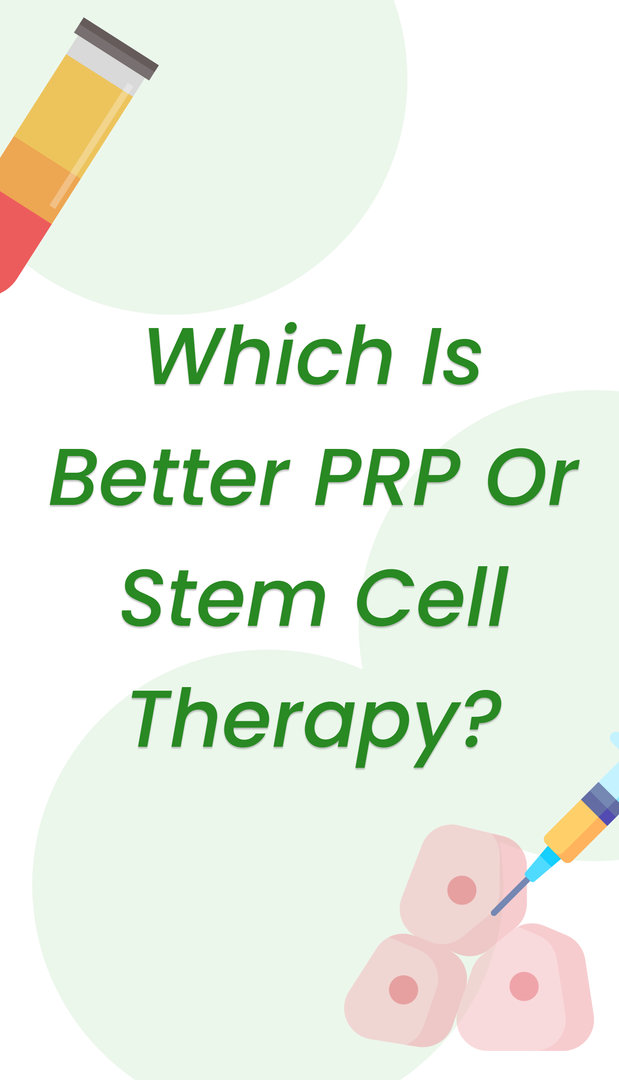
Do not worry! We are here to help you out!
One thing to keep in mind is both these treatments are still undergoing clinical trials. There is still a lot of new information waiting to be discovered.
But let us carefully weigh the information we already have at hand. There is no doubt that stem cell therapy is a much more advanced treatment when compared to PRP injections. PRP therapy infuses the injured area with growth factors.
Stem cell therapy does this as well. In addition, it also jumpstarts the body’s regeneration mechanism. As a result, it also offers a much longer pain-free period when compared to PRP therapy.
We can conclude that stem cell therapy is better suited for more advanced degenerative diseases. PRP therapy is a better treatment choice for acute injuries and conditions.
A third option that doctors offer these days is using both these therapies in conjunction. Clinical studies have shown an enhanced response when both these therapies are used together. Patients also report a much quicker recovery rate.
Conclusion
PRP and stem cell therapies both offer significant potential in regenerative medicine, each with its strengths. PRP is less invasive and suitable for acute conditions, while stem cell therapy is more advanced and ideal for chronic, severe cases. Both therapies hold promise, and with ongoing research, they may revolutionize treatment options for hair loss, orthopedic conditions, and beyond.
So, which treatment have you decided to go for?
Your health is too important to ignore – schedule your appointment now.

